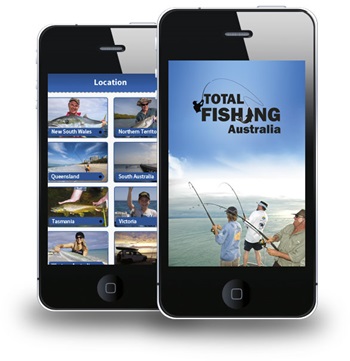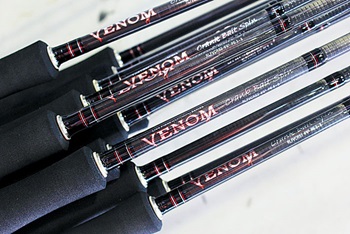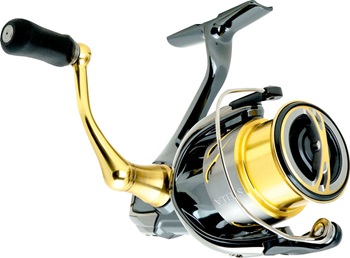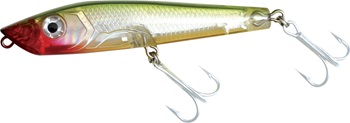Advanced technologies are helping recreational fishers more accurately target their preferred catch, while reducing the environmental effects of their activities
By Natasha Prokop
 Total Fishing Australia app menu.
Total Fishing Australia app menu. Photo: Total Fishing Australia
The recreational fishing trade and tackle industry is worth more than a billion dollars a year in Australia. Each year, many new products are put on the market, with innovations increasingly focusing on more environmentally responsible fishing.
Many recreational fishers see themselves as frontline environmentalists, according to the chief executive of the Australian Fishing Trade Association (AFTA), Allan Hansard.
“It’s in their interests to look after their fish and the environment,” he says. “And that is a trend that is driving the development of new products in a highly competitive and technologically advanced industry.”
The publisher of Australia’s leading recreational fishing magazine Fishing World, Jim Harnwell, has been reviewing products for more than two decades. He says advances in a wide range of commercial technologies are quickly being adopted by the recreational fishing industry.
Aerospace-grade carbon fibre for fishing rods and smartphone-style electronics incorporated into fish finders are just two leading technologies found in the latest products.
He says the 20-year-old innovation of braided fishing line fundamentally changed the way people fish and the types of products developed.
“You can’t underestimate the impact, especially in sport fishing, of being able to use lighter line, lighter gear to catch bigger fish.”
And as lines have become lighter and stronger, the performance of rods has had to improve to meet the demands for size, sensitivity and strength.
The family-owned Australian tackle manufacturer Wilson Fishing is one company that has risen to the challenge. It has poured three years of research and development into a new technique for wrapping carbon fibres as part of its high-performance fishing rods.
The company has patented its Xantu material, making its highly sensitive Venom X range of rods entirely of carbon fibre without the associated weakness of rods that use nano resins or fibreglass inner layers.
Head rod builder at Wilson Fishing Kord Luckus says the Venom X range has been designed and tested right down to the millimetre to be suited to uniquely Australian conditions and the large fish, such as Giant Trevally (Caranx ignobilis), that recreational fishers like to chase. The new Venom X rod was the winner of the 2014 AFTA new product award.
New materials, including new metal alloys, are also making their way into reels and other gear designs, with the Japanese firm Shimano a leader in reel technology. The company’s latest release at the recent AFTA trade show is an addition to the long-running Stella series.
Catch and release
The Stella FI reel uses new materials, micromodule gears adapted from bait-casters and coil wave drag technology to ensure smoother and therefore faster retrieval, which minimises stress on
fish destined for release.
This is an important consideration in the tackle industry as several projects, including some funded by the FRDC, show that more anglers are releasing fish more often, including larger fish.
For example, an assessment of Barramundi (Lates calcarifer) line-fishing in northern Australia found that 72 per cent of fish caught were released.
Recreational fishers had become more aware of the biology and conservation values of the species, which are hermaphroditic. They change to females as they grow to 90 centimetres, and releasing larger fish contributes to conservation efforts.
Improving post-release survival with the correct techniques and gear is a critical part of the catch-and-release philosophy.
The increased use of circle hooks that avoid deep hooking (a major contributor to post-release mortality) and use of fish-friendly soft mesh landing nets are becoming increasingly popular with recreational anglers.
An international leader in the tackle industry, Shimano has an extensive R&D team, with more than 100 staff working on reels alone, constantly trying to improve past designs.
“Shimano won’t re-release something that is essentially the same,” says Chris Cleaver, manager for the company’s rods and reel sales in Australia.
“We try to find anything that was possibly a negative with the old [product] and improve it with new materials and designs.”
Design detail
Australian company Halco Tackle has spent hundreds of hours developing a life-like action for its AFTA award-winning C-Gar surface lure. Halco Tackle managing director Ben Patrick says trying to make a “stable, unstable lure” is a hard line to tread and “takes a lot of tweaking.”
He says the difference between a lure that is stable enough to do what it needs to, yet unstable enough to mimic an erratic swimming motion to attract fish, can be in the order of microns in the design.
R&D in outboard motors is also shifting towards environmentally friendly innovations including better fuel efficiency and lower emissions. Jim Harnwell says there is even discussion about hybrid engines that incorporate electric motors, although in the fishing industry this could still be a decade away from reality.
Improvement in the electronic technologies used in depth sounders and fish finders has paralleled that of mobile phones and they are now capable of a wide range of incredibly advanced processes. Some fish finders can target individual fish of specific species and sizes. This accuracy can assist in avoiding catching and causing unnecessary stress to non-target fish.
Fishing apps
The recreational fishing industry has been quick to take advantage of social media to share stories of a successful catch. Social media and apps are also proving popular sources of reference information on the go, as well as providing programs to record catch information.
One of the latest and most comprehensive fishing apps to be released is Total Fishing Australia, which took nine months to develop. Its features include guides on species, knot tying, locations, a GPS logger and fishing diary, rules and
regulations, and photo competitions.
The benefit of such apps is that they offer on-the-spot access to size and bag limits to assist in sustainable fishing and diaries help get fishers enthused about recording fish that they release.
Total Fishing Australia is available from the iTunes App Store.
Other fishing apps available include: My Fishing Mate Australia, Fishabout, the Australian Fishing App, Redmap and Ikijime Apps.
As fishers continue to insist on products that allow them to fish responsibly and technologies continue to improve, product developers will keep pushing the envelope of innovation to remain competitive.
Allan Hansard says, in line with this, the AFTA is planning to introduce an innovation category as part of its industry awards, presented at its annual trade show.
The award will recognise the contribution that innovations make to driving change in the industry. The 2015 AFTA trade show will be held from 26 to 28 July on the Gold Coast.
Spotlight on innovation
The Australian Fishing Trade Association uses its annual trade show to highlight some of the best and most innovative new products on the market. Winners from the 2014 awards announced at this year’s trade show included the following.




AFTA 2014 Best New Rod
Wilson Fishing Venom X 10–20lb Spin Rod
Wilson Fishing’s patented carbon-fibre Xantu material uses a new technique for wrapping carbon that combines strength with lightweight sensitivity.
The Venom X rods adapt the technology in Wilson Fishing’s larger Venom rods for medium to light gear.
The Venom X range comes in a variety of sizes to suit the range of Australian conditions.
AFTA 2014 Best New Reel
Shimano Stella 2500 FI reel
Micromodule Gear Technology is a new feature of the FI Stella adapted from baitcasting reels.
The material is stronger and the gear mesh finer to give better gear alignment for smoother casting and reduced noise when retrieving. But the most environmentally conscious feature is the coil wave drag – a spring drag system that creates consistent pressure on the drag washers, meaning a smoother and faster retrieval and reduced stress on the fish.
The Stella FI comes in four size models.
AFTA 2014 Best New Hard Bodied Lure
Halco C-Gar Slow Sinking Stick Bait
Halco’s C-Gar lure is weighted for easy casting into a strong breeze but also just enough for a slow sinking rate that will not splash on the surface like a popper.
The C-Gar strikes the balance between stability and instability to create a lifelike swimming action to attract large surface species such as Queenfish, Trevally, Mackerel and Tailor.
Combined with the popular, heavy duty 1/10 Mustad treble hooks and Halco’s strong fish rings, these will not break off, allowing for better catch and release, or catch-and-keep fishing.
The C-Gar is 120 millimetres long.
AFTA 2014 Best New Line
Samaki Xtreme PE braided line
Australian company Samaki has brought the latest Japanese-manufactured Dyneema braid to Australia with its Xtreme polyethylene line.
This line has eight times the standard polyethylene abrasion resistance, a feature achieved through the specific manufacturing process and coating used. An ultraviolet stabilised coating prevents breakdown of the line, without affecting sensitivity.
These features ensure this line will not break under the pressure of a big catch, or leave line dangling from the one that got away.
Photo captions (in descending order):
Wilson Fishing’s Venom X rod. Photo: Wilson Fishing
Shimano"s Stella 2500 FL reel. Photo: Shimano
Halco"s C-Gar surface lure, pictured in Smelt. Photo: Halco Tackle
Samaki Xtreme PE braided line. Photo: Samaki
FRDC Research Code: 2002-039
More information
Allan Hansard, Australian Fishing Trade Association





